How Lenovo and Project Tango will reinvent your smartphone
Lenovo and Google couldn't have picked a more impressive venue to demonstrate the latest iteration of Project Tango at MWC 2016 nor, indeed, one more suited to its indoor mapping capability. The Museu Nacional d'Art de Catalunya isn't short on fine art, and like most museums you could easily imagine getting lost in its various rooms and corridors.
That, of course, is where Tango shines. Indoor navigation, in places where traditional location systems like GPS won't reach, is one of each core skills, and with a preloaded floor plan and the ability to visually recognize whereabouts it is from the space around it.
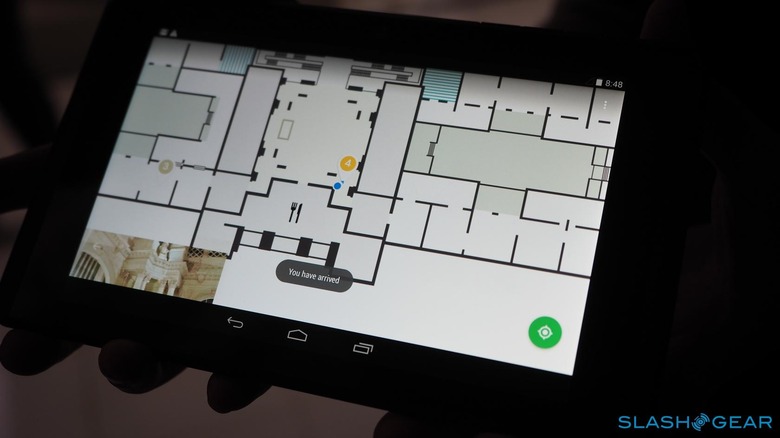
For its Barcelona demo, a number of paintings had been preselected by tour app developers GuidiGO. A trail on a map took you from the entrance through to the first painting, with a pop-up "You've arrived" notification at the end.
Alternatively, you can flip to a more visual system. Point the Tango tablet down at the ground in front of you, and a trail of blue dots lead you through the halls.
It's not infallible. If there's someone in front of you – a real possibility in a crowded museum – then the camera can't see to recognize features. You need to keep your wits about you, too, as occasionally the virtual breadcrumbs will direct you to turn a corner sooner than it should: focus too much on what the screen is showing, and you might end up walking into the wall.
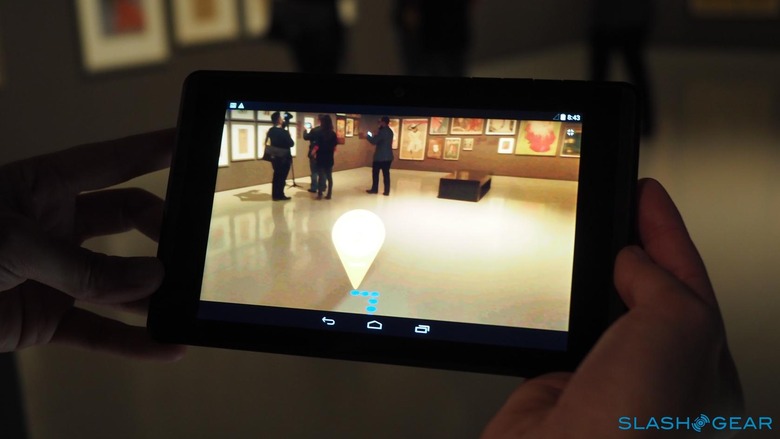
Still, it's impressive when you think that there's no communication between Tango and any external satellites or beacons, and that Google didn't need to fully 3D model the museum before it set us loose.
On top of that, Tango sprinkles a liberal amount of augmented reality. Once we reached a painting, holding the tablet up in front of it revealed a few tap-points hovering over it. Selecting those pulled up more information about the art: who the pictured people were, perhaps, or what the symbolism involved meant.
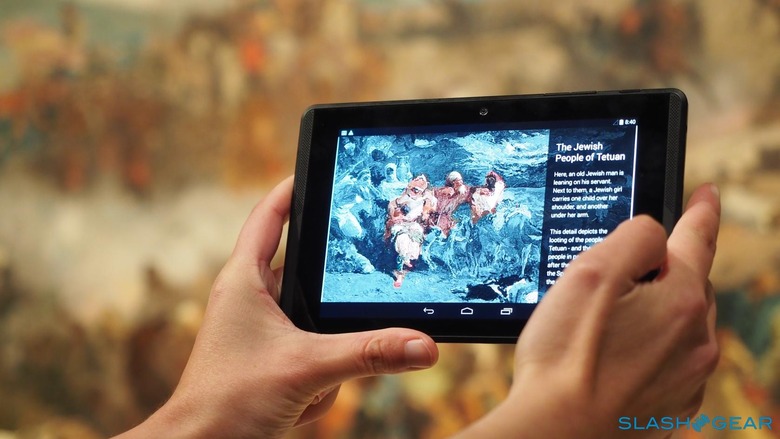
Tango's value, therefore, is closely tied in to the data with which it's pre-populated. While the technology might be able to single-handedly navigate through a space, modeling it in 3D, the usefulness of that virtualization depends to a large extent on the metadata with which it's all tagged.
For a controlled space like a museum or, indeed, a busy metro station or university campus, the source of that data is readily understandable. Out in the wild, however, there's a question around who will be filling the world with shared information, what that metadata will be, and who will be responsible for making sure that it's not offensive, libelous, or just plain spam.
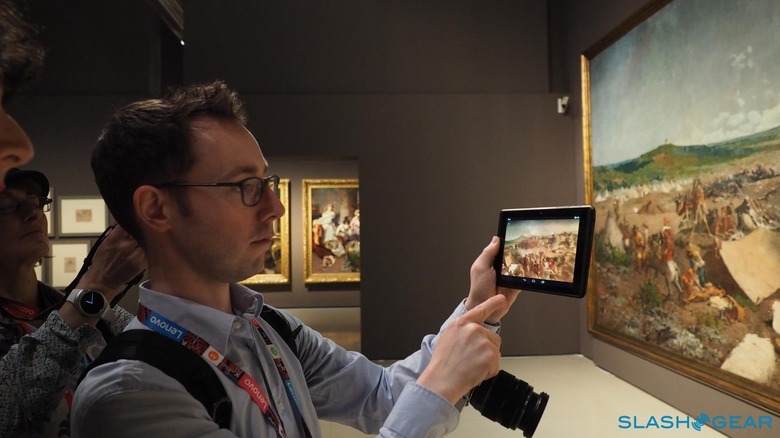
That's the concern I put to Anjana Srinivasan, the marketing director at Lenovo who is taking the lead with the company's Tango project. After all, following the map sabotage made with Google Map Maker last year, it's clear that not everyone thinks the same when it comes to what's appropriate content.
"We've made some decisions but none that we're ready to disclose just yet," Srinivasan told me. "I think Google has obviously learned from those experiences and we will be sure to employ those filters as we go. So we'll have a crawl-walk-run approach – without trying to give too much away – today there are a few locations that are Tango'd, tomorrow we'll open it up to a small group of people we think have the right motivations, and so and and so forth. We'll get to that point, it's just a question of how."
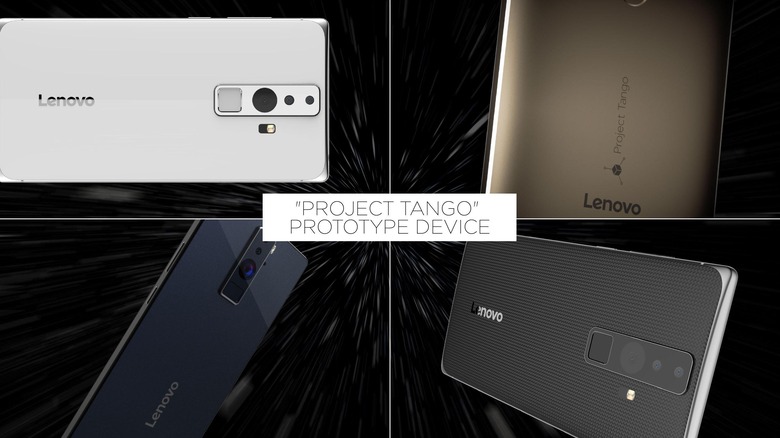
NOW READ: Lenovo is making a Project Tango phone
As for the production Tango phone, Lenovo says it's still on track to have that market-ready for the summer of 2016, complete with a sub-6.5-inch display and a price under $500. That may not be the be-all and end-all of form factors, however, and I put to Srinivasan the idea that a head-mounted display – something akin to Google Glass, perhaps – might be a more obvious digital companion to a fully-mapped world.
"Here's what I think. I think our first objective is to democratize this technology, and the best way to do that is to pick an everyday form-factor and then to do it," Srinivasan countered. "And I think that as the ecosystem matures, as technology matures, what it's capable of will mature. And the form-factors might mature. But our first goal, and our vision, is that every device in the world will know its exact location. Now, do we define that "every" as every smartphone? We don't know. But our goal here is to democratize."
Spreading a device to the mass market when it involves numerous sensors and a powerful chipset from Qualcomm runs head-first into the problem of price, however, though Srinivasan disagrees that Tango is expensive.
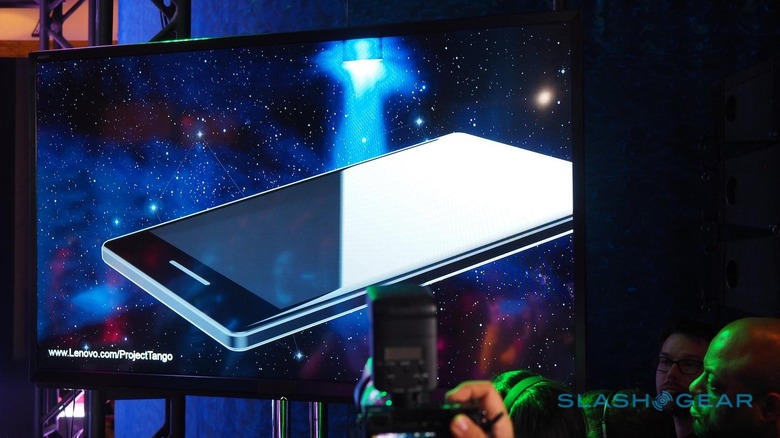
"It's starting at $500. So it's not a thousand dollars, it's not five thousand dollars. That's been our biggest challenge: how do we make this happen in your everyday device, which you can carry with you, you can put it in your pocket, it can be a phone first? So if you think about it, then, the cost of Tango on a $500 device is practically zero, because a $500 device is pretty mainstream for phones."
In fact, the marketing exec argues, when you contrast Lenovo's Tango device with other hardware in roughly the same experiential-computing space – Oculus' Rift, perhaps, or HTC's Vive – it's relatively competitive.
"You have other AR/VR capabilities – which are not the same thing, but the same general realm – that are so expensive, and our goal is to bring it to the mainstream," Srinivasan says. "How quick will it go further mainstream? I have no doubts that in a very short timeframe it is going to, for two reasons."
"One, the experience is not gimmicks. It's not just a few games. It's truly relevant technology that adds value to your everyday life. That's how it's different from anything that's out there. Secondly, I think from a vendor perspective, we're all looking for ways to differentiate. Everyone is making a piece of glass, some are smaller, some are bigger. With this kind of technology with so much relevant value, how is it possible to say no? Some of us saw the value really quickly: when we heard Google articulate their vision we were, like, "That's the bomb. We see, we see. And we want in!""
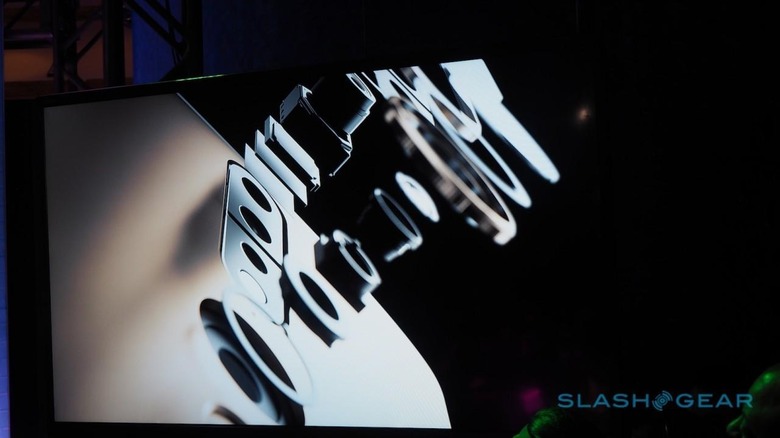
Hardware and pricing are one thing; convincing an attention-short, fairly skeptical public that the next smartphone in their pocket shouldn't be an iPhone or a Galaxy S7 but, instead, a Lenovo is another. Given Tango's broad flexibility, how do you explain its value in a succinct way?
"It's something that I wonder about all the time," Srinivasan conceded. "To let you into my secret, here's what I'm thinking of doing. First of all, we have to think about what it does and not what it is. Because what it is, is somewhat complicated. People who are technology-friendly love it – I'm a geek, and I love to chew on something complex, and so I love it. But I don't think that everybody will like that. So I think we have to talk about what we do, which is why we go very hard on saying "Tango enables applications and location gaming and utilities," and over time we talk about experiences."
"So today was your first opportunity to see and experience. Tomorrow, I'll just say "the Lenovo device that lets you find your way inside a museum and just lets you have an amazing experience." It won't even be about location: I find the word "location" clunky. It's not consumer-friendly."
Beyond that, you can expect Lenovo and Google to take Tango on the road, on the understanding that a few minutes actually playing with the device is worth hours of "brand messages" about why someone should be interested.

"From a media perspective, events are my biggest media. So I think events and retail, hands-on experiences are going to be crucial," Srinivasan says. "For people to actually experience this, because that's when the "Ah-ha!" happens. And I love that; you see so much crap about social media being the next big medium, but as much as I love social media I don't use it for buying. So I'm excited about dialing that back and doing something old-school, and focusing on events and retail to really say, "This is what this is about"."
Even so, figuring out exactly what Tango is for is still a work-in-progress. Not even Google or Lenovo have figured out the extent of its edges, Srinivasan readily admits, with an unusual analogy.
NOW READ: The Project Tango phone is a game-changer
"What's exciting to me about it, is I kept telling Johnny [Lee, Project Tango lead] "I'm going to call this AR," and he used to get annoyed as hell with me," she explains. "But AR is just the output. The fact that the device knows exactly where it is can enable things that we can't even think about today. We're limited by our imagination."
"The example I like to use is, nobody knew Tinder was going to happen when they invented maps, right? So what is possible, I don't know. I'm limited by my imagination. I'm limited by what I know today. So that's what's exciting to me."
[gallerybanner p="428458"]
